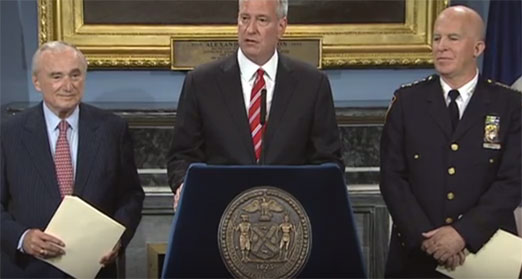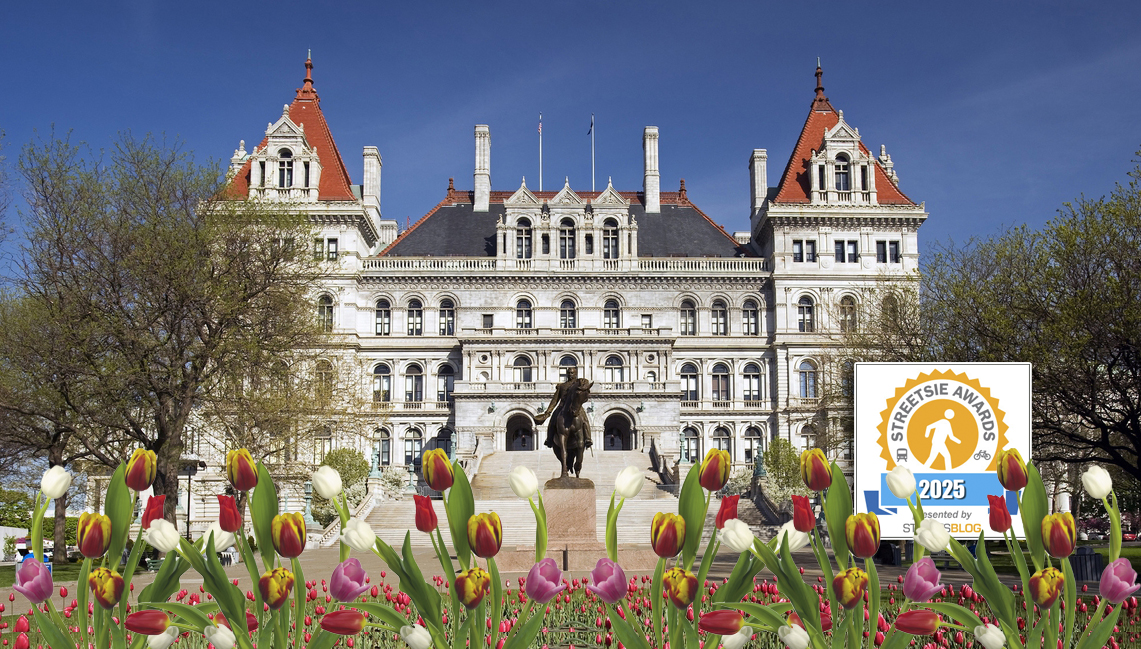
Police Commissioner Bill Bratton announced today that he will leave NYPD next month, after a little more than two and a half years as police chief under Mayor de Blasio. He will be succeeded by James O'Neill, a career officer who currently serves as chief of department, the senior uniformed position within NYPD.
On traffic safety, Bratton will leave the department substantially unchanged since he took over from Ray Kelly, although NYPD has made some improvements on the margins.
Enforcement of the most dangerous traffic violations -- speeding and failure to yield -- has increased in some precincts since 2014. But in many precincts, summonsing for violations like driving with tinted windows continues to outpace the enforcement of violations that actually put people's lives in jeopardy.
An enduring image of Bratton's tenure came early on, when officers on the Upper West Side bloodied 84-year-old Kang Wong, an immigrant who did not speak English, after he unwittingly walked away from a jaywalking stop. Instead of directing officers to simply cease issuing jaywalking tickets, Bratton issued a memo calling for "discretion" when stopping elderly or disabled pedestrians for walking against the signal.
The reaction crystallized Bratton's failure to seriously grapple with how his police department can most effectively deter crashes that kill hundreds of New Yorkers each year and seriously injure thousands more. He seldom personally engaged with the de Blasio administration's Vision Zero initiative and often skipped out on major traffic safety policy announcements.
Bratton didn't substantially increase the number of trained crash investigators at NYPD, so thousands of pedestrian and cyclist injuries continue to go uninvestigated each year.
Under Bratton, NYPD has reportedly trained precinct officers in the use of the Right of Way Law, which enables police to charge drivers who injure pedestrians or cyclists with the right of way, even if an officer didn't personally witness the collision. Application of the law remains far below the scale of injuries and deaths caused by hit-and-run drivers, however.
At the precinct level, officers are still in the habit of anonymously leaking information to the press that implies victims are to blame for their own deaths -- information that's often proven wrong later on. Even when police know the victim isn't at fault, the response to traffic deaths sometimes defies belief. After a hit-and-run driver killed cyclist Matthew von Ohlen in north Brooklyn last month, officers with the 90th precinct were out ticketing cyclists the next day for riding without bells.
NYPD's periodic bike safety blitzes rarely apply better logic. For every bike lane cleared of parked cars by operations like the recent "Bicycle Safe Passage" initiative, there are stories of harassment and ticketing of cyclists for minor violations that are simply easy for police to catch.
Other indicators of police harassment did move in the right direction under Bratton. The department's use of racially discriminatory stop-and-frisk declined substantially, continuing a reduction that began under Kelly, though some officers and commanders continue to make unconstitutional stops. Likewise, criminal summonses for bicycling on the sidewalk dropped 80 percent citywide in 2014 but remain prevalent in some parts of the city, like the 19th Precinct on the Upper East Side, where delivery cyclists are a frequent target.
Bratton's successor, O'Neill, was the subject of a profile in the Wall Street Journal last month. At a recent CompStat meeting, the Journal reports, O'Neill told commanders to stop officers from "rolling up on people" in patrol cars, and urged police to be more approachable. He's also deploying a new method of police evaluation that doesn't rely on merely counting arrests.
O'Neill came up through the same NYPD that downplays the risk of drivers failing to yield and focuses inordinate attention on low-risk cyclist transgressions. He'll have to change that culture if NYPD is going to make a meaningful contribution to traffic safety in New York City.





